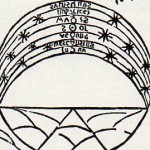
Our modern western calendar reflects the sun’s movements through the seasons and is linked to its motion through the zodiac signs. Just as day follows night, so too Spring follows Winter and reinforces the ancient idea that Time is cyclic. What goes around will come around again.
This is distinctly different to our modern linear approach to Time
There are many periods of time in traditional astrology all based upon observation of various celestial motions such as the aries ingress chart, the eclipse cycles or the saturn return to name but a few.
One useful time cycle is based upon each planet’s synodic cycle with the sun. It is quite commonly used in a variety of ways in traditional astrology and is known as the Minor Planetary Periods.
A planet’s synodic cycle is the time it takes for it to conjunct the sun at the same degree of the zodiac.
Ancient astrologers allotted each planet a specific number of years based solely on this observation. The planetary periods were calculated using the ancient Egyptian year which consisted of 365 days.
Ancient astrologers believed that at the time of a planet’s synodic return, the planet’s power would awaken to take effect and influence an individual’s life.
The minor planetary periods were a very commonly used predictive tool.
| Planet | Number | Rationale |
| The sun | 19 | 235 sun/moon synodic cycles in 19 years |
| The moon | 25 | 309 lunation cycles in 25 years |
| Mercury | 20 | 63 synodic cycles in 20 years |
| Venus | 8 | 5 synodic cycles in 8 years |
| Mars | 15 | 7 synodic cycles in 15 years |
| Jupiter | 12 | 11 synodic cycles in 12 years |
| Saturn | 30 | 29 synodic cycles in 30 years |
The sun’s minor period is its 19 year eclipse cycle when it reoccurs at the same degree of the zodiac once more.
The moon’s minor period is the time it takes for its phases to reoccur on the same days of the year.
The two malefic planets of saturn and mars have a combined total of 45
The benefit planets, the moon, venus and jupiter, have a combined total of 45.